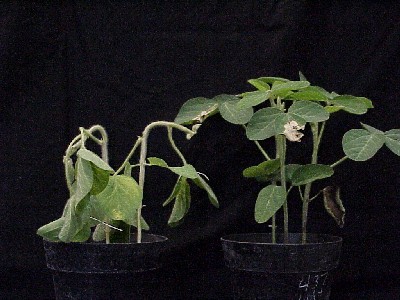Chapter 14: Applied Herbicide Physiology and Movement
14.8 Foliar Active Herbicides
Foliar active herbicides are applied to the above ground portion of emerged plants (post-emergence) and are absorbed by the exposed tissue, leaves, stems, etc. Foliar active herbicides that move, translocate, throughout the plant following absorption are often referred to as ‘translocated’ or ‘systemic‘ herbicides. Foliar active herbicides that do not move within the plant following initial absorption are often referred to as ‘contact‘ herbicides. Whether a herbicide is a systemic or contact type has implications on its application requirements and performance characteristics.
For contact herbicides to be effective, the entire surface of a plant must be thoroughly covered for the plant to be controlled. Since contact herbicides do not move within the plant following absorption, treating one portion of a plant with a contact herbicide will result in destruction of only the treated portion of the plant. In comparison, since systemic (translocated) herbicides move within the plant following absorption, treating one portion of a plant with the herbicide may still result in some effect in the entire plant (Figure 8).

If you are interested in learning more details related to herbicides absorbed by leaves then moved through plants, there is a helpful animation at the Plant and Soil Sciences eLibrary (requires flash player): http://passel.unl.edu/pages/animation.php?a=LeafCellUptake.swf&b=1028313029